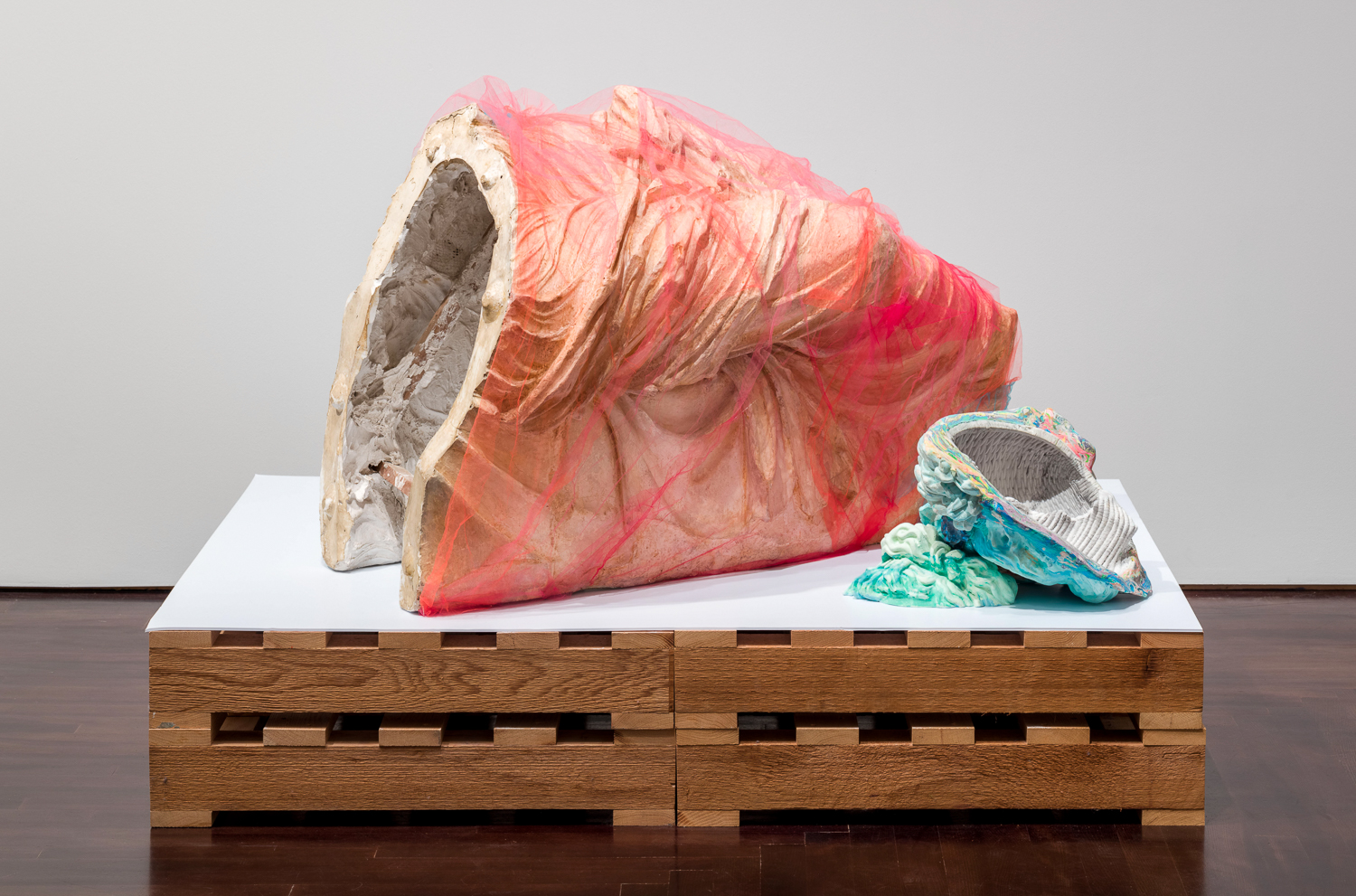













She-Wolf + Lower Figs., 2019
The Blanton Museum of Art
PDF of wall text (English and Spanish)
PDF of press release
Press:
Andy Campbell, Austin: Lily Cox-Richard, Blanton Museum of Art, Artforum, December 2019
Sean J Patrick Carney, Lily Cox-Richard's Kaleidoscopic View on the Classical Cannon, Art in America, October 9, 2019
Lydia Pyne, Subverting the Whiteness of Antiquity, Hyperallergic, September 2, 2019
Erin Keever, Lily Cox-Richard: Re-casting the Blanton’s Battle casts, Sightlines, August 8, 2019
List of works:
Ramp, 2019 (Fiber-reinforced concrete; aggregate including glass, shell, brick, and concrete fragments cast from models of Battle Cast hair; urethane foam; pigment) 11 x 355 x 93 in
She-Wolf, 2019 (scagliola: plaster, rabbit skin glue, pigment) 21.5 x 46.25 x 19.5 in
Weave, 2019 (scagliola: plaster, rabbit skin glue, pigment) 14.75 x 17 x 14.5 in
Figs., 2019 (synthetic tulle netting, storage pallets, Goddesses from the East Pediment of the Parthenon: Dione and Aphrodite, 19th-century reproduction, plaster cast from marble original by Phidias (circa 5th century BCE), The William J. Battle Collection of Plaster Casts.)
Intervention in the Osborne Seminar Room, 2019 (synthetic tulle netting and Apollo Belvedere, 19th-century reproduction, plaster cast from Roman adaptation or copy of a Greek bronze original by Leochares (circa 330 BCE), The William J. Battle Collection of Plaster Casts.)
Notes:
Unlike the paint that originally decorated classical sculpture, the colorful scagliola that Cox-Richard used to produce this She-Wolf would not wear away—its pigment is integrated into the material. Ancient Romans used scagliola as an imitation marble, and 16th-century Italian craftsmen revived the technique to decorate architecture and furniture throughout Europe.
Cox-Richard’s sidewalk sculpture, Ramp, echoes the shape of the platform displaying the Battle Casts in the Osborne Seminar Room downstairs; in the Contemporary Project space, it also functions as a barrier. Ramp visualizes the Western canon of art and civilization—founded on the models of ancient Greece and Rome—as a form of infrastructure. Systems of maintenance hold such structures in place, but groundswells, such as alternative historical narratives, challenge the linear (and exclusionary) trajectories they trace. Ramp’s corners reveal a colorful aggregate, or mixture of materials, and cast fragments of hair made using 3D scans of the Battle Casts’ heads, suggesting the variety of perspectives we should enlarge the canon to contain.
Goddesses from the East Pediment of the Parthenon: Dione and Aphrodite: The marble sculpture from which this two-part cast was produced was originally located on the outside of the Parthenon in Athens, Greece, but has been held by the British Museum in London since 1817. Athenians built the Parthenon almost 2,500 years ago as a treasury-temple to honor the goddess Athena and house the city’s wealth. The sculptor Phidias designed this representation of Dione and Aphrodite (circa 438–432 BCE), which occupied a corner of the Parthenon’s eastern pediment—a triangular architectural detail atop the building’s columns—as part of a sculpture group depicting Athena’s birth. Cox-Richard’s draping of the cast in brightly colored fabric not only suggests the sculpture’s lost polychroming, but also adds an ironic echo of the “aura” that original works of art bear to this plaster replica.
Curated by Claire Howard, The Blanton Museum of Art
***One million thank yous to Sandy Williams IV, Alissa Damato, Christina Sadovnikov, Joe Gindhart, Chris Mohanski, Katie Lang, Eric McMaster, tomato sandwiches and, most of all, Linguini, Claire Howard and the whole dang crew at the Blanton.